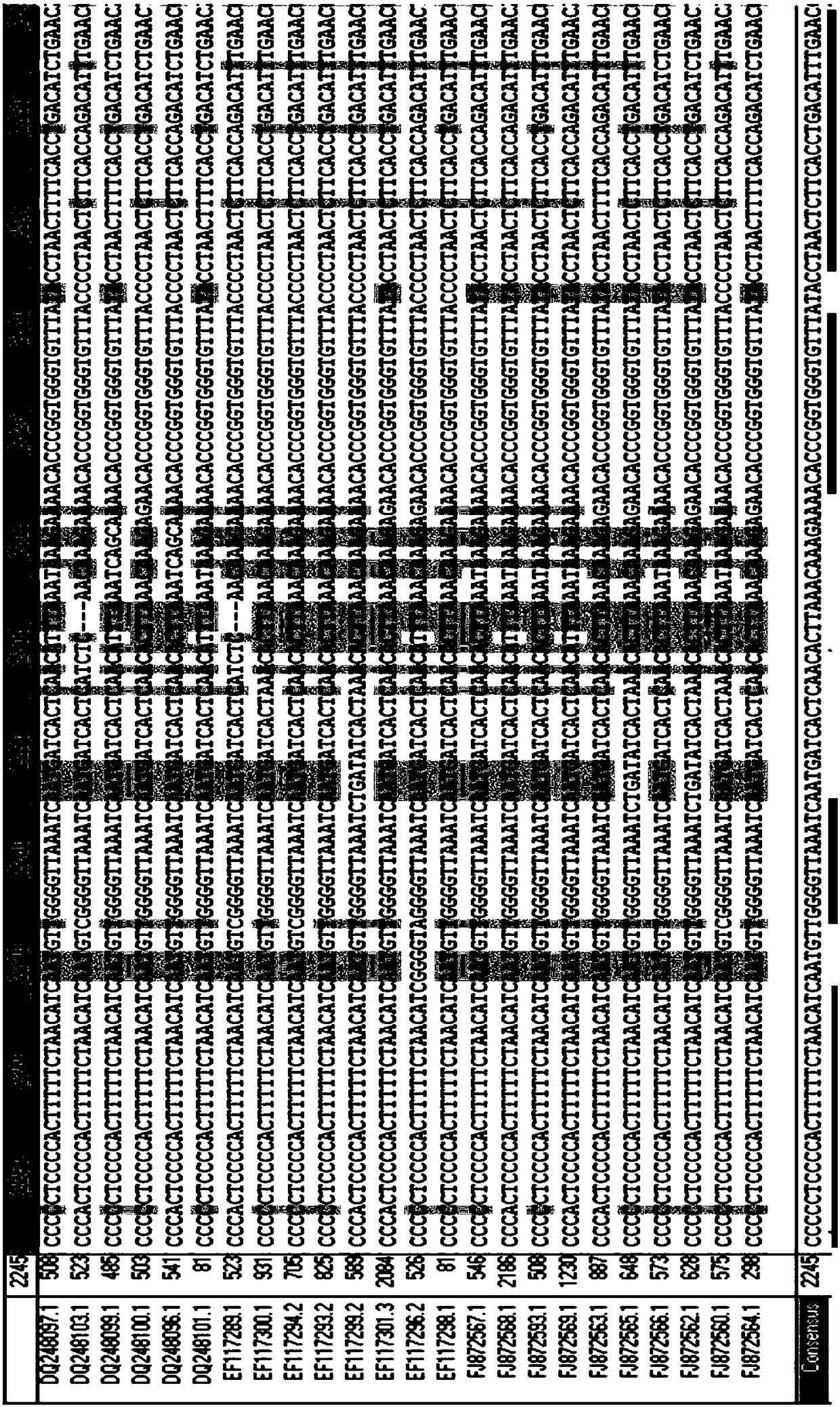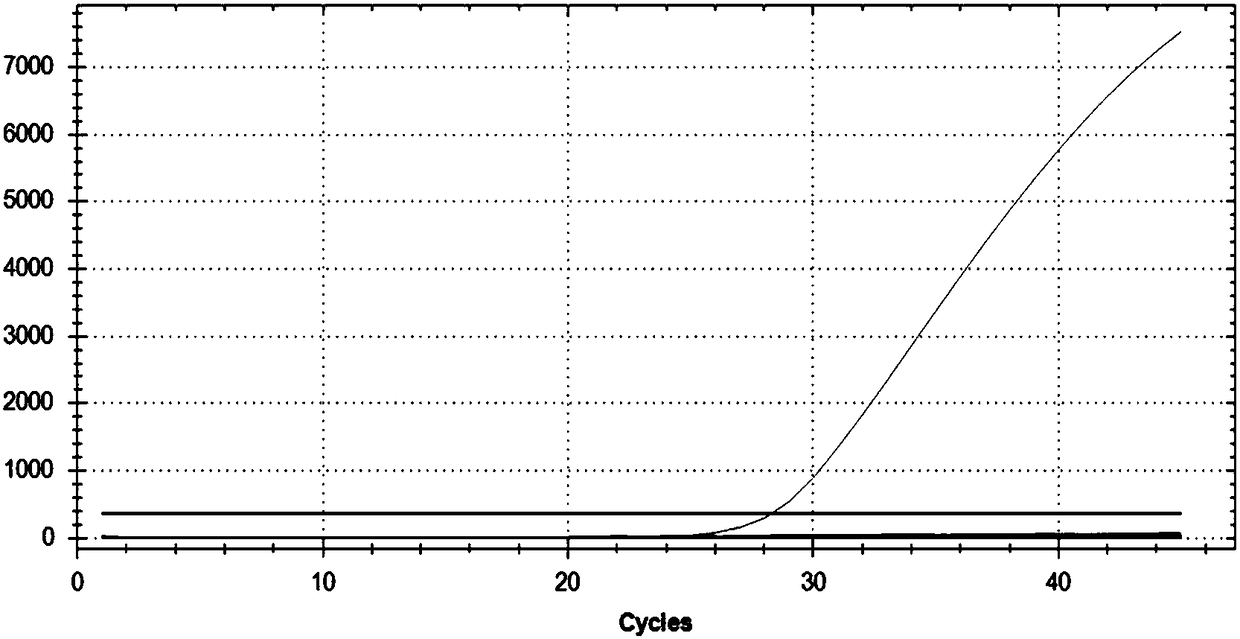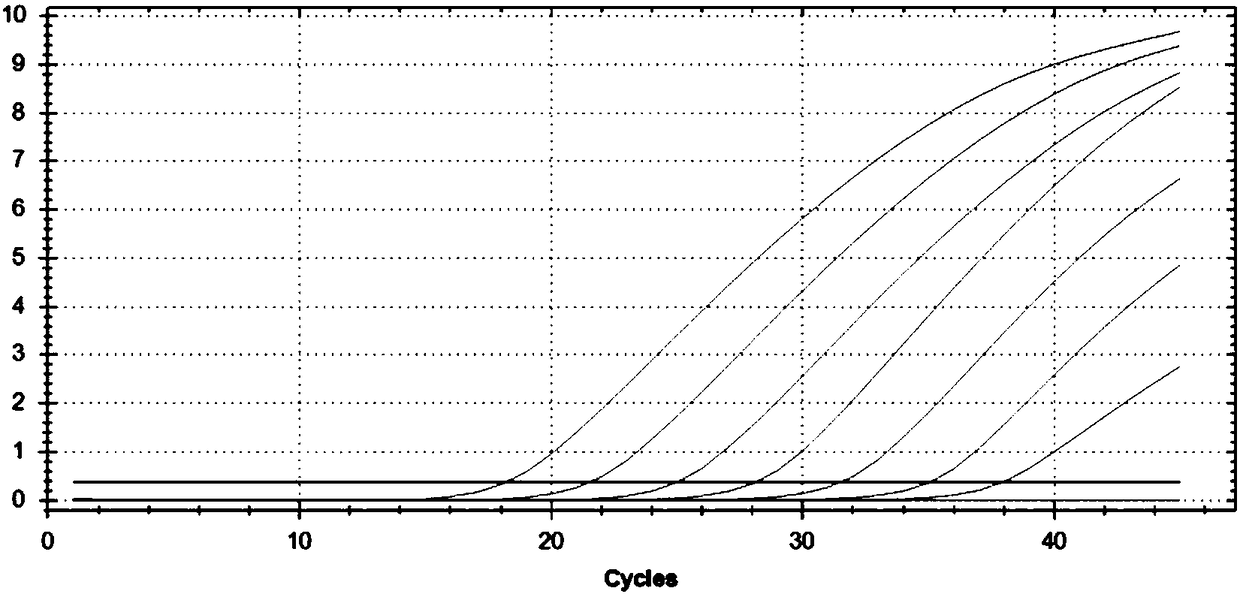Fluorescent PCR (polymerase chain reaction) primer, probe and detecting kit for detecting mycoplasmas genitalium
A technology of mycoplasma genitalium and fluorescent probe, applied in the field of molecular biology
- Summary
- Abstract
- Description
- Claims
- Application Information
AI Technical Summary
Problems solved by technology
Method used
Image
Examples
Embodiment 1
[0041] Example 1 is used to detect the screening and determination of the specific repeat sequence of Mycoplasma genitalium
[0042] All MgPar repeat sequences of Mycoplasma genitalium in the NCBI database were aligned using Vector NTI Suite 6 software to find out the conserved regions. A 117bp highly conserved region of nucleotides in the repeated sequence was found, as shown in SEQ ID NO.1. The sequence alignment results showed that at least 6 of the above-mentioned 9 repeated sequences of each strain of Mycoplasma genitalium contained in the selected region The nucleic acid sequence of the underlined part (including single base polymorphism, which can be achieved by designing merged bases but the merger of base polymorphisms) is the most stable core region in the conserved region ( figure 1 ). Therefore, the core conserved sequence can be used as a fluorescent PCR detection target sequence.
Embodiment 2
[0043] Embodiment 2 detects the primer and the probe of the specific repetitive sequence of Mycoplasma genitalium
[0044] For the target sequence SEQ ID NO.1 used to amplify Mycoplasma genitalium determined in Example 1, the inventor designed many sets of primers and probe combinations. Through experimental comparison, it was found that the fluorescence signal values of the following primers and probe combinations were stable, and the amplified The amplification effect is good, and the detection ct value of the annealing temperature between 55° C. and 60° C. is the smallest, so the present invention determines that the combination of primers and probes is the best combination for detection of Mycoplasma genitalium by fluorescent quantitative PCR.
[0045] MgPar-F1:C(C / A)CTCCCCACTTTTTTCTAACAT (SEQ ID NO.2)
[0046] MgPar-R1:GTTCA(A / G)ATGTC(A / T)GGTGAA(A / G)AGTTAGG(SEQ ID NO.3)
[0047] MgPar-MGB-P1:FAM-ACCCGGTGGGTGTTTA-BHQ1 (SEQ ID NO.4)
Embodiment 3
[0048] Example 3 Optimization of Experimental Parameters and Method Establishment for Mycoplasma Genitalium Real-time Fluorescent Quantitative PCR Detection
[0049] (1) System annealing temperature optimization: the system annealing temperature was changed from 55°C to 65°C, and the results showed that the system with an annealing temperature of 56-60°C had the best amplification effect.
[0050] (2) Optimization of magnesium ion concentration in the system: MgCl in the system 2 Increase from 0.5 μl to 6 μl successively, each increment is 0.5 μl, and three parallel samples are made for each concentration gradient. Result MgCl 2 The amount added is 3 μl (MgCl 2 The amplification effect of the system is the best when the final concentration is 6mM).
[0051] (3) Optimization of fluorescent quantitative PCR amplification system and amplification conditions
[0052]
[0053] Amplification conditions: pre-denaturation at 95°C for 3-8min, 1 cycle; denaturation at 95°C for 15...
PUM
 Login to View More
Login to View More Abstract
Description
Claims
Application Information
 Login to View More
Login to View More - R&D
- Intellectual Property
- Life Sciences
- Materials
- Tech Scout
- Unparalleled Data Quality
- Higher Quality Content
- 60% Fewer Hallucinations
Browse by: Latest US Patents, China's latest patents, Technical Efficacy Thesaurus, Application Domain, Technology Topic, Popular Technical Reports.
© 2025 PatSnap. All rights reserved.Legal|Privacy policy|Modern Slavery Act Transparency Statement|Sitemap|About US| Contact US: help@patsnap.com



